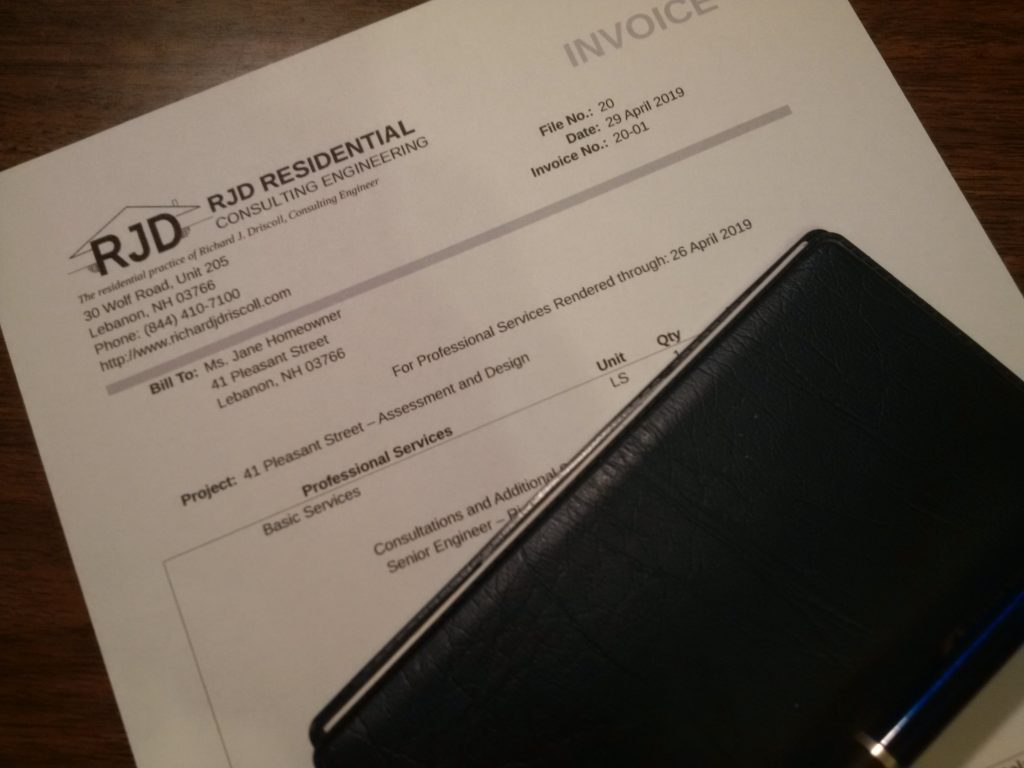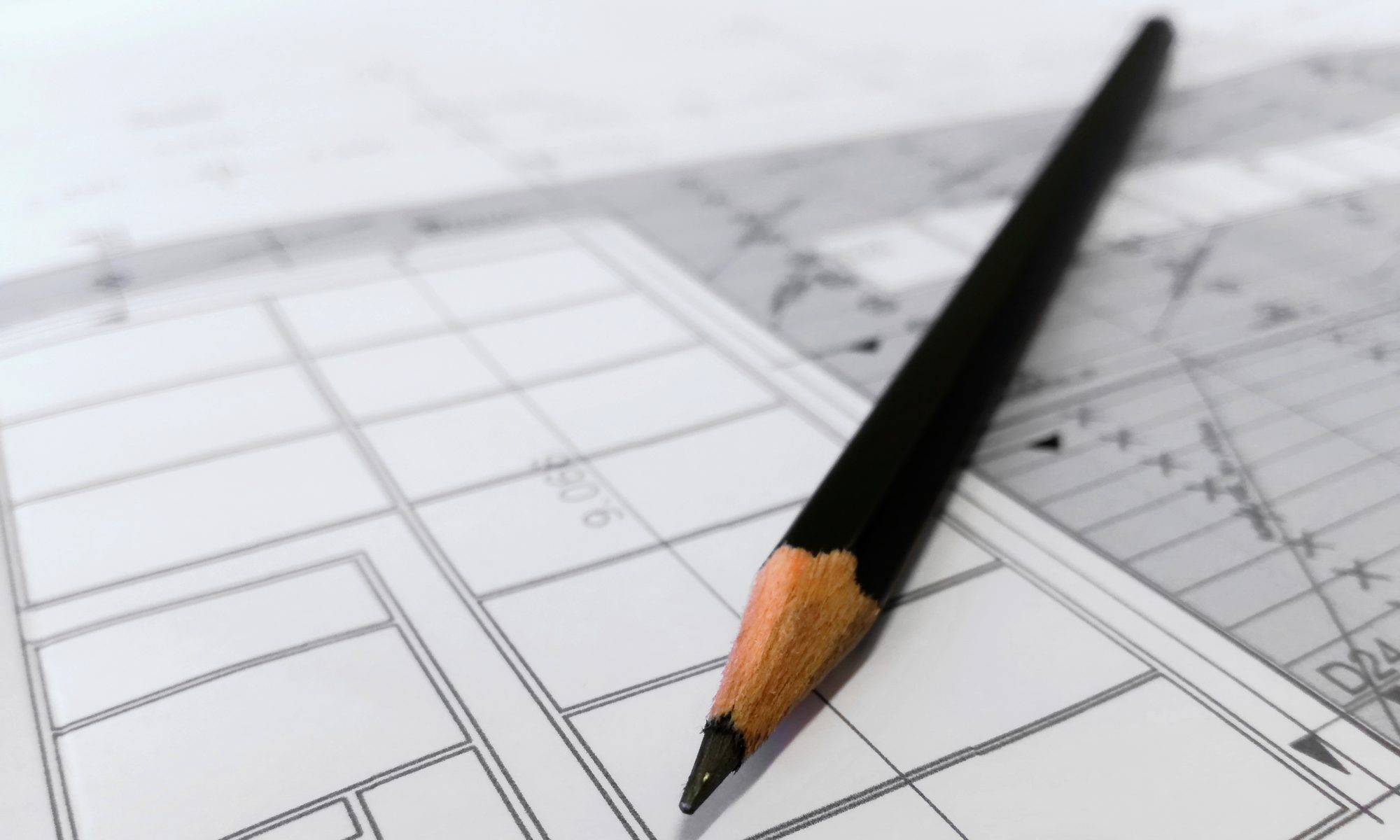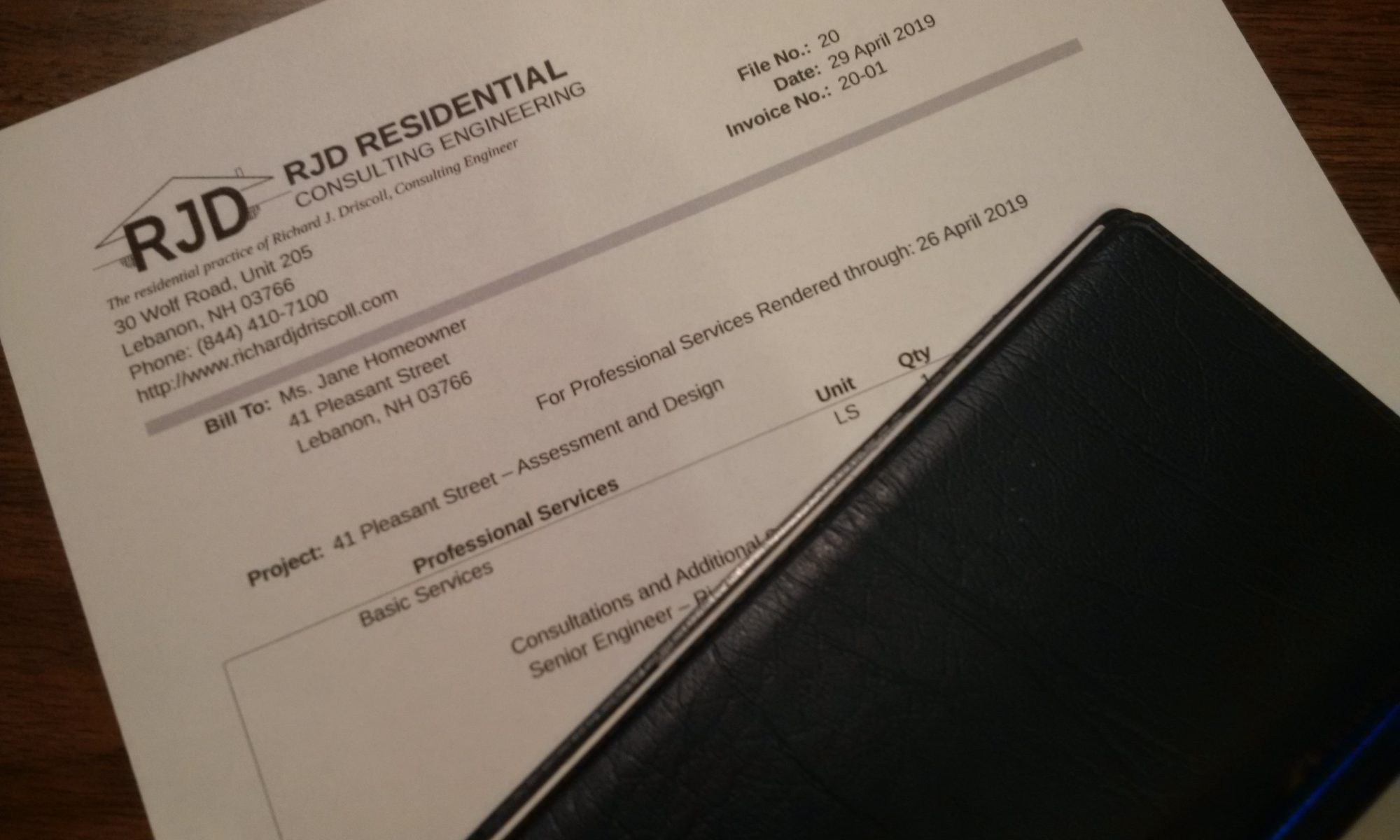
Homeowners and even some residential contractors can be surprised by the cost of engineering services. Most residential projects do not require engineering, Homeowners are seldom in the position to retain an engineer. In addition, engineering fees can be confusing to the uninitiated and are especially counter-intuitive when it comes to residential projects. This unfamiliarity can lead to unrealistic expectations.
The first thing to understand is that to become licensed as a professional engineer requires considerable education and experience. It typically requires an accredited bachelors degree in an engineering disciple, four years of employment experience under the supervision of a licensed professional engineer and passing multiple full-day exams. Therefore, you should expect to pay what you would pay for other educated professionals. As is the case in other fields, specialties that require advanced knowledge and experience, like structural engineering, typically cost more. Most engineering practices will have different billing rates for more versus less experienced staff. However, the practices that will work with homeowners are typically small and comparatively “top heavy”. You can have an engineering firm without junior staff, but not without at least one licensed principal.
Second, at some level, all engineering practices sell their time. The cost of a particular scope of services will depend on the time required to complete each task. This is simple enough, but a homeowner or residential contractor will typically never see the effort put into their project. You might see an engineer’s site visit, but not the effort to write a report. Or you may see a set of plans, but not the calculation behind it. As is the case with lawyers and accountants, the office work done by engineers is something of a black box for clients.
Third, engineers have obligations beyond those to the client, specifically, to maintain the health safety and welfare of the public. The what an engineer has to actually do to complete a project is defined by a complicated mixture of binding and nonbinding codes and standards, professional licensing laws and practice guidelines, professional association ethics guides, firm policies and individual judgment. Therefore, an engineer may have to perform certain actions, even if the client would consent to their omission. An engineer might be unwilling to perform and assessment without providing the client with written recommendations. Certain design decisions may require calculations to be prepared to document the underlying assumption or to submit to a building official for permitting or to comply with professional record-keeping rules. These practices are necessary to maintain quality and manage risk for all stakeholders, however, they contribute to the opacity of engineering fees.
A good example of engineering efforts as a black box is the extent to which structural design fees for residential projects can vary in totally counter-intuitive ways. The cost to design a few components for a renovation should cost less than designing an entirely new house, right? Surprisingly enough this not always true. For a lot of highly routine design calculations for conventionally constructed homes, tabulated solutions are available that allow the design to proceed rapidly. In addition, engineers that perform a lot of new residential design will have standard drawing details on file for conventional construction. As a result, the design of a simple new home can be completed in hours rather than days, making efficient use of less expensive staff. But less conventional elements and systems may have to be engineered from scratch. The consequence of this is that time and therefore cost required to engineer a home or some part thereof is largely decoupled from the cost of construction.
Consider a sub-development of homes that are largely the same, perhaps with some cosmetic variations from one to the next. From an engineering perspective, they may all be the same. So the engineering cost can be divided among the total number of houses built. Contrast this with a custom home, which may be substantially more complex, with different roof lines, split levels, courtyards and bays and is almost by definition, one-of-a-kind. Custom homes often contain unconventional construction, such as large beams and columns to maximize floor plans and window openings. The engineering effort required for a custom home could be several times larger as a proportion of construction costs compared to a simple tract home.
Alterations and renovations present another series of challenges that may make engineering cost disproportionally high relative to the construction cost. Consider a structural renovation project requiring removing part of a bearing wall. The existing structure cannot just be selected from a table. Instead, the engineer will have to visit the site to see how the home is constructed and calculate the forces in the wall before designing a beam. But it does not end there. The beam will have to be supported somehow and likely the load will be transferred to existing elements of the structure. Generally, existing construction is allowed to remain in use indefinitely if maintained in good repair. However, altering a building may trigger requirements that an element or system comply with current codes and standards. If those existing elements are not code-conforming under the new loads – a common issue in old homes – reinforcement will have to be designed. If connections do not comply with conventional construction assumptions or proprietary connectors cannot be used, then the connections will have to be designed too. This can be quite time-consuming. The engineering effort for a small and seemingly simple project like this can easily be more than the structural design for an entire conventionally constructed home.
One of the problems with homeowners not understanding the basis for engineering fees is that “sticker shock” may cause someone to forgo engineering services when they need it. This can lead to homeowners failing to prevent a problem or having to fix something twice or be exposed to liability for potential code violation or even compromise their own safety. When you need engineering services, you need them. Certain analysis and design tasks, such as analysis of high snow, wind and earthquake loads and design of large beams and columns, must be performed by a licensed design professional, as a matter of practicality and of law. A sales call from a contractor is no substitute for an engineering evaluation of a foundation crack or a leaning retaining wall.
Retaining an engineer as a homeowner is a significant investment. It is important to consider the cost of engineering fees in terms of the trade-offs of not having them. That said, there are ways to focus your engineer’s services to where they deliver the most value. Some services are better left to architects and paraprofessional designers and drafters. You can work with your engineer to allow them to make efficient use of their time. Client decisions can account for a significant portion of the engineer fees on a project. By making timely decisions and avoiding changes, you can reduce additional services fees. By being an informed client and understanding the basis for engineering fees it is possible to use engineering services efficiently and when they provide the most value.
The information and statements in this document are for information purposes only and do not comprise the professional advice of the author or create a professional relationship between reader and author.


